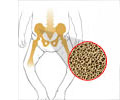A team of chemists are developing ways to bind iron in the brain to fight the neurological damage of diseases.
A team of chemists are developing ways to bind iron in the brain to fight the neurological damage of diseases.
The Duke University chemists say that the key is to remove potentially harsh forms of iron that produce harmful free radicals while leaving benign forms of iron alone to perform crucial functions in the body."Using existing chelating (metal-binding) molecules to target iron in the brain can be tricky because iron is essential to the body. We want to go after only the iron that is causing the damage. We don't want to pull the iron out of healthy sites," said Katherine Franz, an assistant chemistry professor at Duke.
Franz said that her team is developing ways to formulate sensitive chemical sentinels they call "pro-chelators." Those are metal-binding agents wrapped in chemical "cages" so they can enter the brain and wait in reserve until they encounter a site of potential damage.
Such a site contains both iron and the molecule hydrogen peroxide. The reaction between these two players -- known as a "Fenton reaction" -- can lead to the production of a highly reactive oxygen-containing chemical group called a hydroxyl radical, Franz said.
These toxic chemical radicals can cause oxidative stress in brain cells that has been linked to Parkinson's and Alzheimer's as well as other age-related maladies such as macular degeneration in the eyes, she said.
The pro-chelators that Franz contain phenols that carry chemical "masks" around themselves to keep them from binding with benign forms of iron or other metals, such as those found in some essential enzymes. But the presence of excessive amounts of hydrogen peroxide will activate an unmasking, allowing the phenols to sop up and inactivate the bad iron, she said.
Advertisement
Source-ANI
JAY/B











